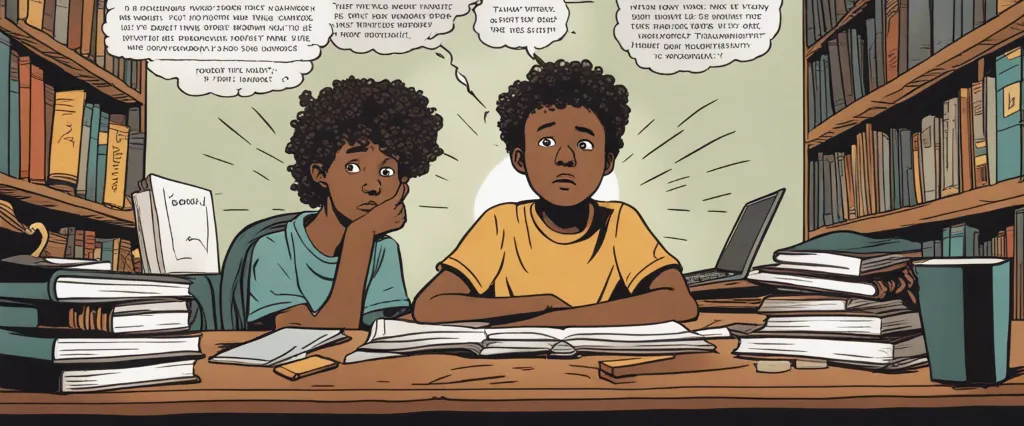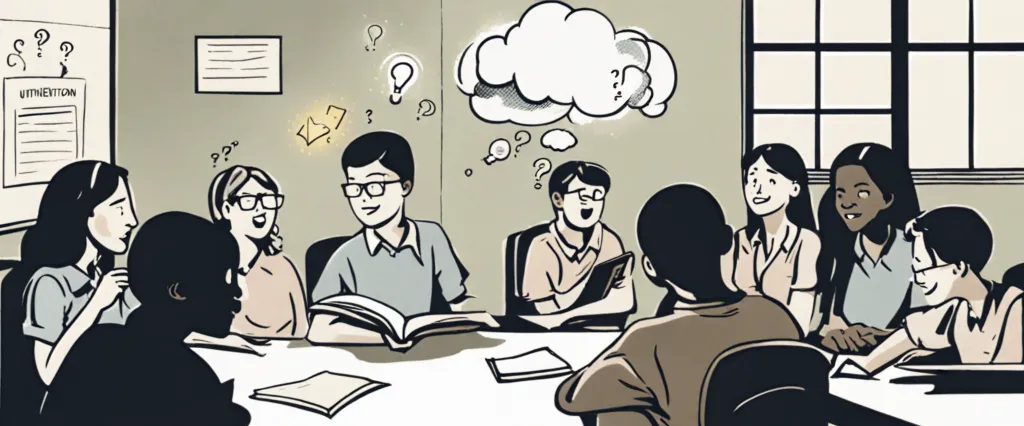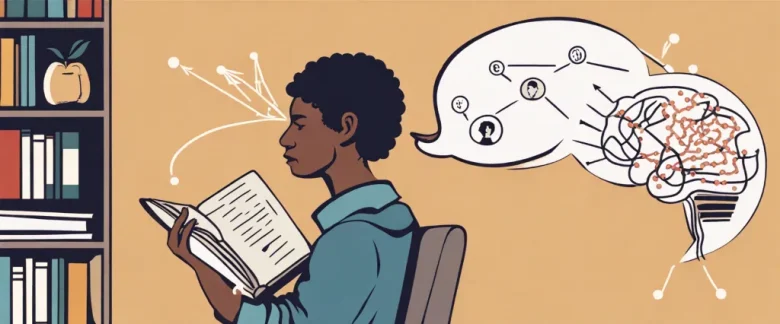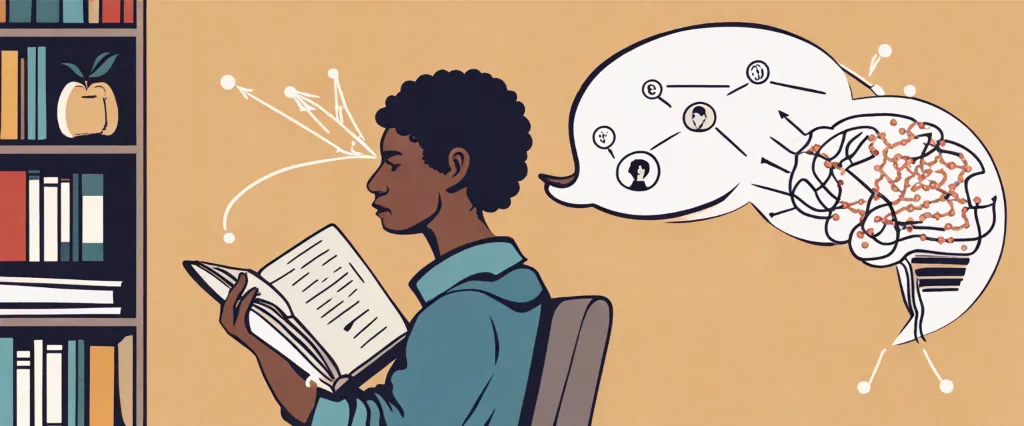In his book “Why Don’t Students Like School?”, Daniel T. Willingham invites readers on a journey to uncover the underlying reasons behind students’ lack of enthusiasm for education. As a cognitive scientist and professor at the University of Virginia, Willingham provides a powerful examination of the human mind and its natural tendencies, unraveling the mysteries that affect students’ motivation, attention, memory, and critical thinking. Through his engaging and accessible writing style, Willingham offers practical insights and evidence-based strategies for educators, parents, and anyone who seeks to enhance learning experiences and ignite a genuine passion for education within students.
Chapter 1: The Myth of Learning Styles
Chapter 1 of Why Don’t Students Like School? by Daniel T. Willingham explores the topic of learning styles and challenges the popular belief that students have distinct and fixed learning preferences. The chapter is titled “The Myth of Learning Styles” and aims to debunk this widely accepted but unproven idea.
Willingham begins by acknowledging the appeal of the learning styles theory, which suggests that people have specific ways of processing information and learning that are fixed and unchangeable. He points out that the theory is not only popular among educators but also in corporate training programs and even practitioners in neurology and psychology, despite lacking empirical evidence.
He argues that while people may have preferences in various aspects of life, such as food or socializing, there is little evidence to support the idea of fixed learning styles. Willingham explains that the theory of learning styles rests on the assumption that learners are passive, letting information flow into their brains without actively processing it. However, research has shown that our brains process information in multiple ways, engaging various cognitive systems simultaneously, making it improbable that a single learning style can adequately capture this complexity.
The author also highlights the danger of teachers tailoring their instruction based on the assumption of learning styles. He suggests that educators would be better off focusing on evidence-based teaching methods that have proven to be effective for all students, such as explicit instruction, practice, and feedback.
In conclusion, Willingham challenges the notion of learning styles and encourages educators to embrace research-based teaching strategies that cater to the diverse cognitive processes involved in learning.
Chapter 2: Memory and Learning
Chapter 2 of “Why Don’t Students Like School?” by Daniel T. Willingham focuses on the relationship between memory and learning. Willingham explains that memory is essential for learning because without remembering information, there is no learning. He goes on to address common misconceptions about memory and provides practical strategies to enhance students’ memory and learning.
One common misconception about memory is that it works like a video camera, capturing and storing everything we experience. However, Willingham explains that memory is more like a Swiss cheese, with some parts missing or distorted. This understanding is crucial for educators, as it explains why students may struggle to remember certain information or concepts.
To enhance memory and learning, Willingham suggests that educators pay attention to the basic principles of memory. First, he emphasizes the importance of getting students’ attention. Teachers need to grab their students’ interest and engage them in the learning task. Second, he highlights the significance of repeating information to strengthen memory. Teachers should provide opportunities for students to review and revisit important concepts over time.
Furthermore, Willingham emphasizes the power of building links between new information and students’ existing knowledge. When students can connect new ideas to what they already know, it becomes easier to remember and understand the new information. Additionally, he encourages educators to provide clear and structured explanations, breaking complex concepts into smaller, digestible parts.
In conclusion, Chapter 2 of “Why Don’t Students Like School?” explores the relationship between memory and learning. Willingham debunks misconceptions, emphasizing the significance of grabbing students’ attention, repetition, connecting new information to prior knowledge, and providing clear explanations. By understanding these principles and implementing effective strategies, educators can enhance students’ memory and improve their overall learning experience.
Chapter 3: Cognitive Load
Chapter 3 of “Why Don’t Students Like School?” by Daniel T. Willingham focuses on cognitive load, which refers to the amount of mental effort being used in working memory. Willingham explains that working memory has limited capacity, and when it becomes overloaded with too much information or complex tasks, students struggle to learn effectively.
One aspect of cognitive load that impacts learning is the split-attention effect. This occurs when students must mentally integrate multiple sources of information, such as text and diagrams, leading to increased working memory usage and a higher chance of cognitive overload. To address this, teachers should present information in integrated formats, for example, by adding explanatory text directly onto diagrams.
Willingham also introduces the concept of intrinsic load, which refers to the inherent difficulty of a task. He suggests that teachers need to consider students’ existing knowledge and skills when designing lessons to ensure that the cognitive load remains manageable. By scaffolding instruction, breaking complex tasks into simpler steps, and building on students’ prior knowledge, teachers can enhance learning by reducing cognitive load.
Moreover, Willingham emphasizes the importance of automatizing basic skills to free up working memory for higher-level thinking and problem-solving. Students need practice and repeated exposure to reach automaticity, which allows them to complete routine tasks efficiently and automatically, leaving mental resources available for more complex cognitive processes.
In summary, Chapter 3 of “Why Don’t Students Like School?” delves into the concept of cognitive load and its impact on students’ learning. Willingham provides strategies for teachers to lessen cognitive load, such as integrating information, scaffolding instruction, and promoting automaticity. By understanding and managing cognitive load effectively, educators can create optimal learning environments for their students.
Chapter 4: Understanding Students’ Motivation

Chapter 4 of “Why Don’t Students Like School?” by Daniel T. Willingham focuses on understanding students’ motivation. Willingham begins by explaining that motivation is a complex collection of emotions, thoughts, and beliefs that drive people to engage in certain activities. He stresses that motivation is crucial for learning and academic achievement.
The chapter discusses three key elements that influence student motivation: interest, autonomy, and competence. Willingham suggests that an effective way to generate interest is for teachers to tap into students’ natural curiosity by presenting thought-provoking questions, puzzles, or problems. When students find the subject matter interesting, they are more likely to be motivated to learn.
Furthermore, giving students a sense of autonomy can enhance their motivation. Willingham argues that when students feel they have some control over their own learning, they are more likely to engage with the material. Teachers can provide choices and opportunities for students to make decisions, fostering a sense of ownership and empowering them in their learning process.
Finally, the chapter addresses competence, highlighting the importance of students feeling competent and capable in the classroom. Willingham explains that students are motivated when they feel they can succeed, and teachers can support this by setting appropriate challenges and providing timely feedback.
Overall, the chapter emphasizes that motivation is not solely inherent but can be influenced by teachers and the learning environment. By leveraging students’ interests, granting autonomy, and helping them develop competence, educators can foster a more motivated learning experience, ultimately leading to better academic outcomes.
Chapter 5: The Power of Stories
Chapter 5 of “Why Don’t Students Like School?” by Daniel T. Willingham is titled “The Power of Stories.” In this chapter, Willingham explores how stories captivate and engage the human mind, making them an effective tool for learning.
Willingham begins by emphasizing that humans are wired to think in narratives. Our brains naturally seek patterns, and stories provide a framework that meets this pattern-seeking inclination. They offer a logical sequence of events with a clear cause-and-effect structure, helping us understand and remember information better than disconnected facts or data.
Additionally, stories tap into emotions, and emotions play a significant role in learning. When something emotionally significant happens in a story, it grabs our attention and makes the information more memorable. Willingham argues that educators can harness this power by incorporating narratives into teaching materials and lesson plans.
Willingham also explains how narratives can help in comprehension and problem-solving. By framing information or concepts within a relatable or engaging story, students can better understand their relevance and apply them to real-life situations. Stories provide context, making abstract concepts more concrete and relatable.
However, Willingham advises caution when using stories as a teaching tool as not all stories are created equal. Some may entertain but not necessarily educate. Educators should select stories that align with the learning objectives and ensure the information they provide is accurate.
Ultimately, Chapter 5 of “Why Don’t Students Like School?” emphasizes the importance of leveraging the power of stories to enhance teaching and learning. By utilizing narratives effectively, educators can captivate students’ attention, improve comprehension, and facilitate the transfer of knowledge to practical application.
Chapter 6: Critical Thinking
Chapter 6 of Daniel T. Willingham’s book “Why Don’t Students Like School?” focuses on critical thinking and provides insights into how educators can teach students to think more critically. The chapter begins by explaining that humans are not naturally critical thinkers and tend to rely on intuition and existing knowledge rather than rational analysis. Willingham highlights that critical thinking is not a single skill but a combination of various cognitive processes.
The chapter emphasizes the importance of knowledge in critical thinking. Willingham argues that critical thinking is domain-specific, meaning that one must have a strong foundation of knowledge in a particular subject to think critically about it. He stresses that students need extensive knowledge in a variety of subjects to develop better critical thinking skills. Without this knowledge, critical thinking becomes superficial and limited.
Willingham offers strategies for teachers to enhance critical thinking in their classrooms. He suggests engaging students in debates and discussions, encouraging them to explain and defend their viewpoints, and providing opportunities to analyze and evaluate various perspectives. The author also emphasizes the need to teach students how to ask good questions to facilitate critical thinking.
Furthermore, Willingham highlights the importance of metacognition, which involves thinking about one’s own thinking processes. He suggests teaching students metacognitive strategies such as self-reflection and self-questioning to improve their critical thinking abilities.
Overall, Chapter 6 of “Why Don’t Students Like School?” emphasizes that critical thinking is a complex skill that requires domain-specific knowledge and deliberate practice. By providing students with opportunities to explore, question, and evaluate information, educators can help them develop stronger critical thinking skills.
Chapter 7: Problem Solving and Transfer
Chapter 7 of “Why Don’t Students Like School?” by Daniel T. Willingham focuses on problem solving and the transfer of knowledge. Willingham begins by debunking the common misconceptions held by many educators and individuals that problem-solving skills are domain-general and can be easily transferred from one task to another. He explains that problem-solving skills are highly dependent on domain-specific knowledge and that individuals cannot become proficient problem solvers without a solid foundation of knowledge in a particular area.
Willingham emphasizes that in order to improve students’ problem-solving abilities, teachers should focus on building their knowledge base and not solely on teaching problem-solving techniques. He highlights that knowledge is essential for problem solving, as students need to be able to recognize patterns, access relevant information, and retrieve relevant schemas when approaching a problem.
The author also sheds light on the concept of transfer of knowledge, which refers to the application of previously learned knowledge and skills to new, similar situations. He discusses the widely debated idea of near transfer, which refers to the transfer of knowledge from one context to a similar context, and far transfer, which is the transfer of knowledge from one context to a completely different context. Willingham explains that near transfer is more feasible and common than far transfer, as the latter requires deeper understanding and abstraction.
To foster transfer of knowledge, Willingham suggests that students need ample practice in applying their knowledge to various contexts and real-world scenarios. He recommends teachers provide a variety of examples and problem-solving tasks that require students to apply their knowledge flexibly and adaptively.
In conclusion, Chapter 7 highlights the critical role of domain-specific knowledge in problem solving and emphasizes the importance of building a solid knowledge base for students to effectively develop problem-solving skills and facilitate the transfer of knowledge to new situations.

Chapter 8: Creativity and Curiosity
Chapter 8 of “Why Don’t Students Like School?” by Daniel T. Willingham focuses on the topics of creativity and curiosity. The chapter begins with the assertion that students are naturally curious, and educators should aim to harness and nurture this curiosity throughout their teaching practices.
Willingham addresses the misconception that creativity is an innate talent that some possess and others lack. He argues that creativity is a skill that can be developed and strengthened through deliberate practice and the mastery of domain-specific knowledge. By highlighting the importance of knowledge in the creative process, Willingham emphasizes that students must have a solid foundation of knowledge in order to think creatively and generate original ideas.
To encourage creativity in the classroom, educators should provide students with opportunities to solve complex problems, engage in open-ended discussions, and encourage risk-taking. Willingham explains that creativity flourishes when individuals feel secure in their knowledge and are willing to venture into uncharted territory.
Additionally, the chapter explores the relationship between curiosity and motivation. Willingham asserts that curiosity is a powerful motivator for learning, and educators should strive to keep students engaged and interested in their subjects. One approach suggested by Willingham is to present students with a puzzling question or scenario that elicits their curiosity, making them active participants in the learning process.
In summary, Chapter 8 of “Why Don’t Students Like School?” emphasizes the importance of creativity and curiosity in the classroom. It highlights that creativity can be developed through deliberate practice and a strong foundation of knowledge. Furthermore, it underscores the crucial role of curiosity as a motivating force for learning. By providing opportunities for students to engage in open-ended discussions, tackle complex problems, and cultivate their curiosity, educators can create an environment that fosters creativity and enhances students’ overall learning experiences.
After Reading
In conclusion, Daniel T. Willingham’s book, “Why Don’t Students Like School?”, provides an insightful examination of the cognitive processes involved in learning and addresses the common obstacles that hinder student engagement and motivation. By illustrating the importance of critical thinking, memory, and problem-solving, Willingham emphasizes the significance of creating a rich and stimulating learning environment. Offering practical strategies for teachers to enhance their instructional methods, he demonstrates that by tapping into students’ curiosity and building upon prior knowledge, educators can foster a love for learning within their students. Ultimately, this book serves as an invaluable resource for both educators and parents, shedding light on the underlying reasons behind students’ aversion to school and providing effective solutions to make the learning experience more enjoyable and meaningful.
1. Make It Stick: The Science of Successful Learning” by Peter C. Brown, Henry L. Roediger III, and Mark A. McDaniel – This book explores the science behind effective learning strategies, offering practical tips and techniques to enhance student understanding and retention.
2. Mindset: The New Psychology of Success” by Carol S. Dweck – Dweck’s book explores the power of mindset and how adopting a growth mindset can positively impact student achievement. It delves into the importance of embracing challenges and persisting through difficulties.
3. “The Talent Code: Greatness Isn’t Born. It’s Grown. Here’s How.” by Daniel Coyle – Coyle explores the concept of talent and presents a compelling argument that talent is not innate but rather developed through practice and effective coaching strategies. The book offers insights into how educators can foster talent and facilitate skill development in students.
4. “Visible Learning for Teachers: Maximizing Impact on Learning” by John Hattie – Based on a comprehensive research synthesis, this book highlights the key factors that influence student learning and achievement. Hattie explores various strategies that have proven to be effective and provides practical guidance for educators to enhance their teaching practices.
5. The Power of Habit: Why We Do What We Do in Life and Business” by Charles Duhigg – Duhigg dives into the science of habits and explores how they shape our lives and routines. Although not specifically focused on education, the book provides valuable insights into the importance of establishing positive habits to drive student motivation, engagement, and academic success.




